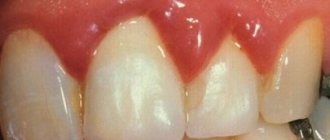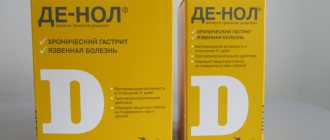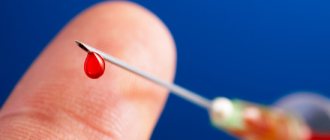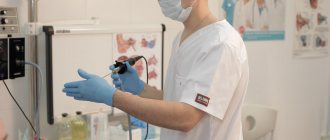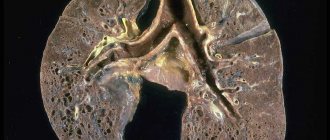Causes
The exact cause of psoriasis is unknown. Genetic predisposition plays a significant role in its development: approximately 40% of patients with psoriasis or psoriatic arthritis have a family history of the disease (the presence of psoriasis in close blood relatives).
The development and course of the disease are also influenced by lifestyle, environmental factors and habits: smoking, excess weight, taking certain medications (beta blockers, lithium, antimalarial drugs), infections, alcohol, stress.
Hydrogen peroxide
Hydrogen peroxide saturates skin cells with oxygen, thereby improving their functioning, stabilizes metabolic processes in cells, promotes the maturation of skin cells and their normal division, softens scales and stimulates their removal from plaques, destroys fungi and bacteria. The main uses of hydrogen peroxide include:
- Lubricating plaques with 3% hydrogen peroxide. Treat areas of skin affected by inflammation 5-10 minutes before applying creams or ointments. After using peroxide, small plaques disappear after 3-5 days.
- Compresses on skin areas - use a 3% solution of the drug. First, gauze is well moistened with the solution, after which it is applied to the plaques for a couple of hours. You need to make compresses twice a day for a couple of weeks.
- Internal use of the drug for psoriasis is not recommended, since peroxide in the body breaks down into water and oxygen, which becomes an oxidant. High concentrations of peroxide provoke cell death and a number of chemical processes that lead to the formation of free radicals.
Treatment of psoriasis
Existing treatment methods help cope with exacerbations, prolong periods of remission and significantly improve the quality of life of patients. However, psoriasis cannot be completely cured; even with long-term good condition, repeated exacerbations are possible.
In the treatment of psoriasis, medications for external use (lotions, creams, ointments, shampoos for the scalp), as well as systemic therapy, are used.
The choice of treatment method depends on the severity of the disease, localization and extent of the process, the presence of concomitant diseases, individual response to previous treatment, and the patient’s capabilities and desires.
Features of treatment
Area-limited psoriasis in most cases requires only external therapy. It includes the use of the following groups of drugs:
- glucocorticosteroids;
- vitamin D analogues;
- retinoids;
- calcineurin inhibitors;
- tar preparations.
In more severe cases, in addition to external therapy, systemic therapy and phototherapy are used.
The following groups of drugs are used for systemic therapy of psoriasis:
- retinoids;
- immunosuppressants (methotrexate, cyclosporine, apremilast);
- genetically engineered biological products.
How is psoriasis treated at the Rassvet clinic?
The dermatologist conducts a full examination of the patient’s skin, nails, hair and mucous membranes, collects anamnesis and, based on the data obtained, makes a diagnosis. In the vast majority of cases, additional manipulations and studies are not required. Sometimes a skin biopsy is performed to clarify the diagnosis. If you suspect the presence of concomitant diseases, you may need to consult other specialists (general practitioner, rheumatologist, ophthalmologist).
On the body's defense
The immune system is a system of organs and cells that protect the body from pathogens: viruses, bacteria, protozoa, helminths, and so on. Every day the body encounters millions of microbes, many of which are pathogens, but due to immune responses, diseases rarely develop. The reason the immune system fights enemies so well is that it can identify them very precisely: it can recognize the characteristic pieces of molecules of the pathogens that attack it, mainly the substances with which they are coated. Such pieces are called antigens.
In order to communicate with each other, immune cells release special information molecules - cytokines.
Cytokines can be either stimulating (“we’ve been attacked, call everyone up!”) or inhibitory (“false alarm, let’s return to peaceful life!”). In principle, cytokines can be released by all cells of the body, but immune cells communicate in the language of cytokines especially actively. The table below lists the main groups of cytokines and their functions. Table. Cytokines are molecules produced by immune and non-immune cells that play an important role in regulating the immune response.
| Name | Function | Some representatives* | |||||
| Interferons | A group of molecules released by cells in response to viral invasion; have similar properties and antiviral effects | Interferons alpha (IFN-α), beta (IFN-β), gamma (IFN-γ) | |||||
| Chemokines | Small proteins produced in cells and tissues when a pathogen appears; stimulate cell migration, adhesion and activation | CXC, CC, CX3C, XC | |||||
| Tumor necrosis factors | Proteins synthesized mainly by monocytes and macrophages; cause necrosis of tumor cells and enhance the immune response | Tumor necrosis factors alpha (TNF-α), beta (TNF-β, also known as lymphotoxin-α) | |||||
| Interleukins | Soluble peptides synthesized mainly by T lymphocytes; in isolation stimulate groups of cells to divide or differentiate. Have pro- and anti-inflammatory effects depending on the interleukin and the cell | IL-6, IL-17, IL-23 | |||||
| Hemopoietins | A group of molecules with similar properties; stimulate the reproduction and differentiation of blood cells | Colony-stimulating factors (CSF) | |||||
| Transformative growth factors | Proteins that control proliferation, cell differentiation and other functions in most cells, including immune cells | Transforming growth factor alpha (TGF-α), beta (TGF-β) | |||||
| * Some cytokines have multiple effects and can belong to several groups at once (for example, IL-8 is the chemokine CXCL8, and IL-2-4 affect hematopoiesis) | |||||||
There are two types of immunity: innate and acquired.
- Innate immunity is the sum of all evolutionarily ancient immune cells (among them macrophages, dendritic cells, blood granulocytes, etc.) and molecules (antimicrobial peptides, lysozyme, a special group of proteins called the “complement system”, etc.). Innate immune cells are able to nonspecifically (by antigens common to different groups of foreign agents) recognize pathogens and, attracting other immune cells and molecules, immediately destroy them. Two types of innate immune cells are especially important in the pathogenesis of psoriasis: dendritic cells and neutrophils . Below we will talk about these cells in more detail. Although innate immunity is indispensable for a quick reaction to an enemy, its work lacks specificity: if, for example, one bacteria multiplies very strongly in the body, then innate immunity will lose in the fight against it - it will win in numbers. On the other hand, if the body reacts equally actively to the plague and to a common cold, this will also not lead to anything good. Therefore, the next stage in the evolution of the immune system was the emergence of acquired (adaptive) immunity.
- Cells acquired immunity recognize much more specific antigens. If the cells of the innate immune system are able to understand: “our enemy is some kind of bacterium,” then the cells of the acquired immunity notice: “we were attacked by a bacterium, on the surface of which there is such and such an antigen,” - which, you see, where more useful for defeating the enemy. In addition, acquired immunity has a so-called immunological memory, a “black list”, where the antigens of all pathogens that have ever encroached on the integrity of the body are recorded (by the way: the effect of vaccinations is based on the phenomenon of immunological memory). The combat unit of acquired immunity is special immune cells, lymphocytes. There are two types: B- and T-lymphocytes. B lymphocytes - these are, one might say, the artillerymen of immunity. One of the subtypes of B lymphocytes is plasma cells, which are able to produce special proteins against antigens - antibodies. Antibodies stick to antigens, stick around pathogens from all sides and make them more vulnerable - first of all, attracting innate immune cells, macrophages, which recognize antibodies and safely eat such pathogens. As for T lymphocytes, then they are divided into three main types:
- T-killers kill those cells that have been labeled by the body as “wrong” - for example, infected with viruses or tumor cells;
- Helper T cells give instructions to other immune cells about how to work. There are different groups (populations) of T helper cells: for example, T helper type 1 (Th1) spur T killer cells. T helper cells type 2 (Th2) trigger B lymphocytes to fight; in the case of psoriasis, Th1 is of great importance, as well as another subtype of T helper cells - Th17.
- T-suppressors are needed to calm overly enraged colleagues. They regulate the balance between activation and inhibition of the immune response. Suppressor T cells either directly interact with other cells or use cytokines to send them an inhibitory signal and thus slow or stop the immune response. The importance of T-suppressors is demonstrated by the fact that the development of chronic infections and tumors is associated with their increased activity, and autoimmune diseases (when the native immune system rebels against healthy cells) with reduced activity.
The life of each lymphocyte consists of several stages. At first, when the lymphocyte has not yet encountered an enemy, it is called a naive lymphocyte. Having encountered a pathogen, lymphocytes learn to recognize it and become mature. Mature lymphocytes are divided into “fighters” (T-killer cells, T-helper cells, plasma cells, etc.) and memory cells. Memory cells do not participate in battles, but they remember the antigens of all pathogens that have ever encroached on the body: each antigen has its own clone of memory cells. And if later some pathogen attacks again, memory cells will quickly resume populations of “fighters” focused specifically on it, and will defeat the pathogen even before it has time to cause significant harm to the body.
The connecting link between innate and acquired immunity is special innate immune cells, dendritic cells. They encounter a pathogen, capture it, “disassemble” it into antigens and migrate with them to the nearest lymph node, where they transmit information about them to other immune cells. The immune response is launched, T-helpers call T-killers and B-lymphocytes into battle, populations of Th1, Th2 and Th17 mature from naive T-cells, and the immune reaction unfolds to its fullest. And, as already mentioned, dendritic cells play a major role in the pathogenesis of psoriasis.
Prevention
Considering your form of psoriasis and its type, you need to avoid anything that can cause complications.
If a patient suffers from psoriasis, he needs to follow a diet. All simple carbohydrates should be excluded from the diet. It is also better to avoid spicy and salty foods. To reduce the likelihood of exacerbations, you should not drink alcoholic beverages or coffee.
Proper nutrition will not completely cure the patient, but will reduce the likelihood of exacerbations and relapses. As a rule, nutrition is adjusted by the attending physician, taking into account the medical studies performed and the individual characteristics of the patient’s body. It is very important to organize the correct drinking regime and drink at least two liters of clean water per day.
In addition to alcohol and coffee, patients with psoriatic skin rashes should avoid smoked foods, canned fish, sweet carbonated drinks, and products with artificial additives and dyes.
One of the most dangerous products is herbs and spices, which contain aromatic substances and essential oils. They can lead to worsening of the skin condition and increase the symptoms of psoriasis.
All patients need to carefully care for both healthy and affected skin. It is better to avoid hot baths. It is not recommended to irritate the skin or use a hard washcloth. If the skin is itchy, do not scratch it. To relieve symptoms, it is better to use creams and ointments.
Clinical researches
TM La-Cri products are recommended by the Union of Pediatricians of Russia. Clinical studies conducted by specialists have proven the high efficiency, safety and tolerability of products, including for daily skin care of children with mild and moderate forms of atopic dermatitis and during remission, accompanied by a decrease in the quality of life of patients. As a result of therapy, a decrease in the activity of the inflammatory process, a decrease in dryness, itching and flaking was noted.
Sources:
- Andropova T.V., Gudina M.V., Odintsova I.N., Hygiene of children and adolescents, Siberian State Medical University Publishing House, 2022.
- Cohen Bernard A. Pediatric dermatology, MEDpress-inform, 2015.
- Bonifazi Ernesto, Differential diagnosis in pediatric dermatology, Panfilov Publishing House, Binom. Knowledge Laboratory, 2014.

